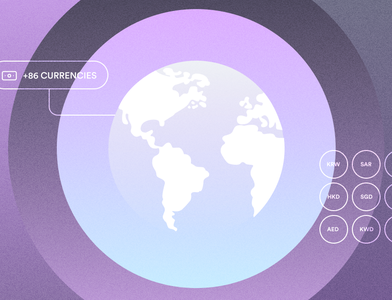
How To Avoid Distractions When Working From Home
Working remotely doesn’t make you efficient on its own, but there are a few healthy habits that can help.

Karola Morawska
Published on July 25, 2016

Pilot is now Plane!
Read Story →
A Redesigned Payments Experience
Read Story →
How to Choose a Remote Pay Strategy: The Complete Guide
Read Story →Increasingly more entrepreneurs and employees realize that successful products aren’t just built between 9 and 5 in one place. Mostly because that’s not where we are productive.The ultimate key to success is effectiveness. It’s neither time nor office space. But like a cubicle, remote doesn’t make you efficient on its own.Having been part of a remote-first company, I’ve developed a set of habits that help me stay productive when working from home (more so than I had ever been at any office). Here are some tips.
Make boundaries. 🚧
As opposed to an office, most distractions at home are voluntary. You have to be aware of this. Make clear boundaries: if you’re at work, you don’t do laundry. Those things can wait.Keep your workspace clean. ✨
Keep your desk clean and empty to reduce visual distractions. This way you’ll mimic a professional atmosphere and ultimately stay focused and creative.But there’s more to that tidy desk–tidy mind thing. Avoid eating or watching Netflix at your desk. This will make your brain associate the space with doing work.Dress up for work. 👚
If your workspace looks neat, why shouldn’t you?People think of working remotely as doing work on a couch and in your pajamas. It’s tempting, especially for former white-collar employees. Be careful, though. Studies show that clothing impacts personal performance. By wearing sloppy clothes day after day you might eventually become lazy.Plan your day. 🗓
Divide your day into activity chunks. You don’t have to work for 8 hours straight.Start with 2–4 hours in the morning when you’re the most fruitful, then take a longer break to make errands, do house chores, or cook launch for your family. After that, take another work chunk—and so on.A clear work schedule will help you prevent procrastination.Make a daily to-do list. 📋
Take further control of your time by assigning specific tasks to the scheduled activity chunks. Tools like Trello, Asana, or Things will get you covered.Having a list of tasks will help you easily group related or similar tasks more to minimize the number of time-consuming context switches.Write ideas down. 📝
How many times did a great idea pop into your head while you were working on something else entirely? And how many times did your mind let you ignore it? Probably few.Whenever you’re in a similar situation, write your unexpected thoughts down on a piece of paper and you’ll regain focus instantly. It’s pure psychology: whenever you make a note, the part of your brain responsible for remembering that thing is no longer occupied.Once in a while, review your notes and turn them into tasks or actions.Disconnect. ⏲
We’re all addicted to consuming information—and the fear of missing out is more powerful than ever. With the constant stream of interruptions, concentration has become a desirable feat.One of the common methods to regain your attention is the Pomodoro technique, where you work for at least 25 minutes and then take a short break. There are many apps that can help you count the time, but the tricky part is that once you start the counter, you can’t pause it until it’s completed. This technique forces you to focus and keep your breaks, which are important for long-term productivity.Use the right tools. 🛠
How often do you scroll down Instagram infinitely when you’re supposed to be working? We’ve all been there, and fortunately, studies show it isn’t harmful when it’s done occasionally — we’ve grown to check those as a substitute for a coffee break.But these sites tend to engage us more than our work. Cyberslacking has become a headache for Internet-driven companies and, overall, a societal problem. But the bottom line is: you waste your own time after all.Luckily, you can use a few apps or tools to remedy this:- Install a separate browser (or set up a new persona) dedicated to work.
- Analyze the time you spend online with Rescue Time. It might bring you down to earth.
- Restrict your access to the websites that make you slack the most during work time. StayFocused can help you with that.
- Track your progress with a reward-based app, like Forest which lets you grow a tree when you’re not letting anything distract you. Imagine how satisfying it must be to see a forest after an entire day of productive work.
Related articles
From startups to large corporations, US companies of all sizes use Pilot for international payroll, benefits and compliance.


Unified Payroll is fully launched!
New customers now have access to Unified Payroll, as well as new HRIS features, onboarding enhancements, and vendor management.
